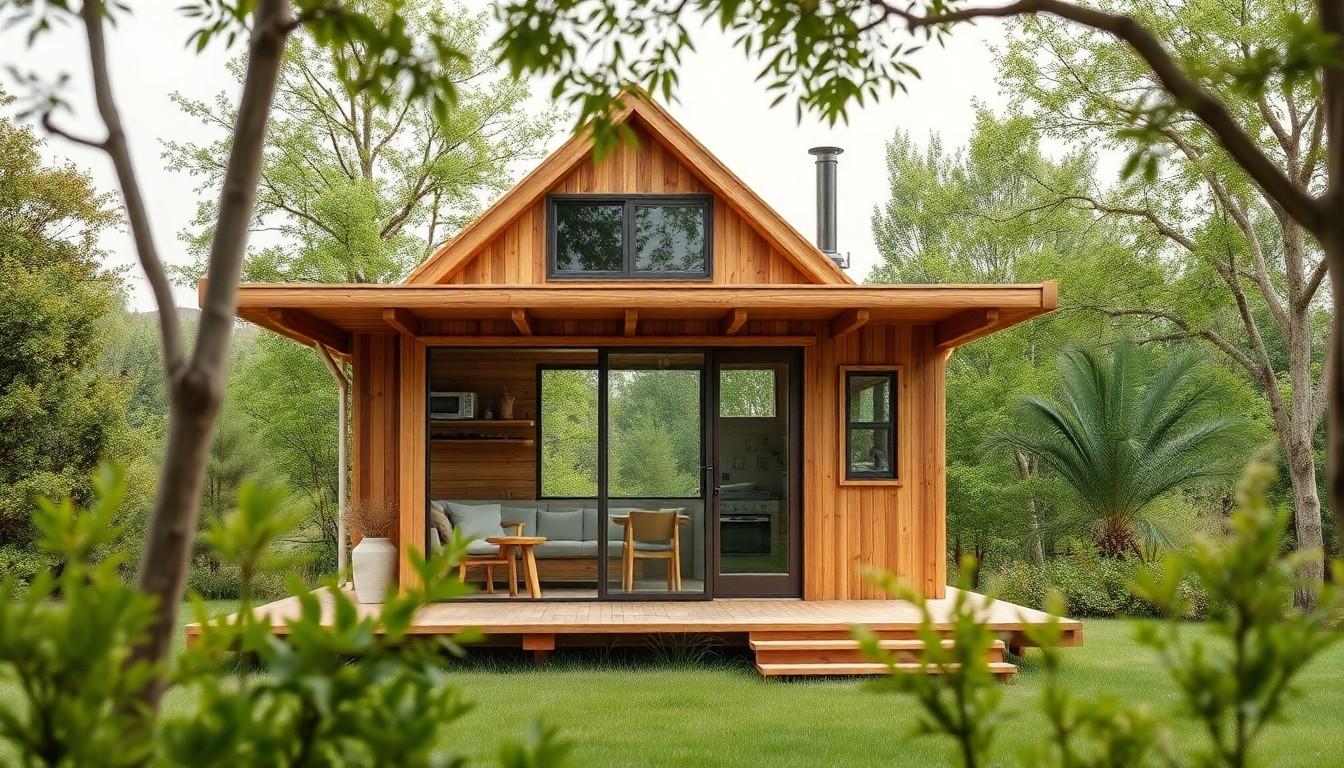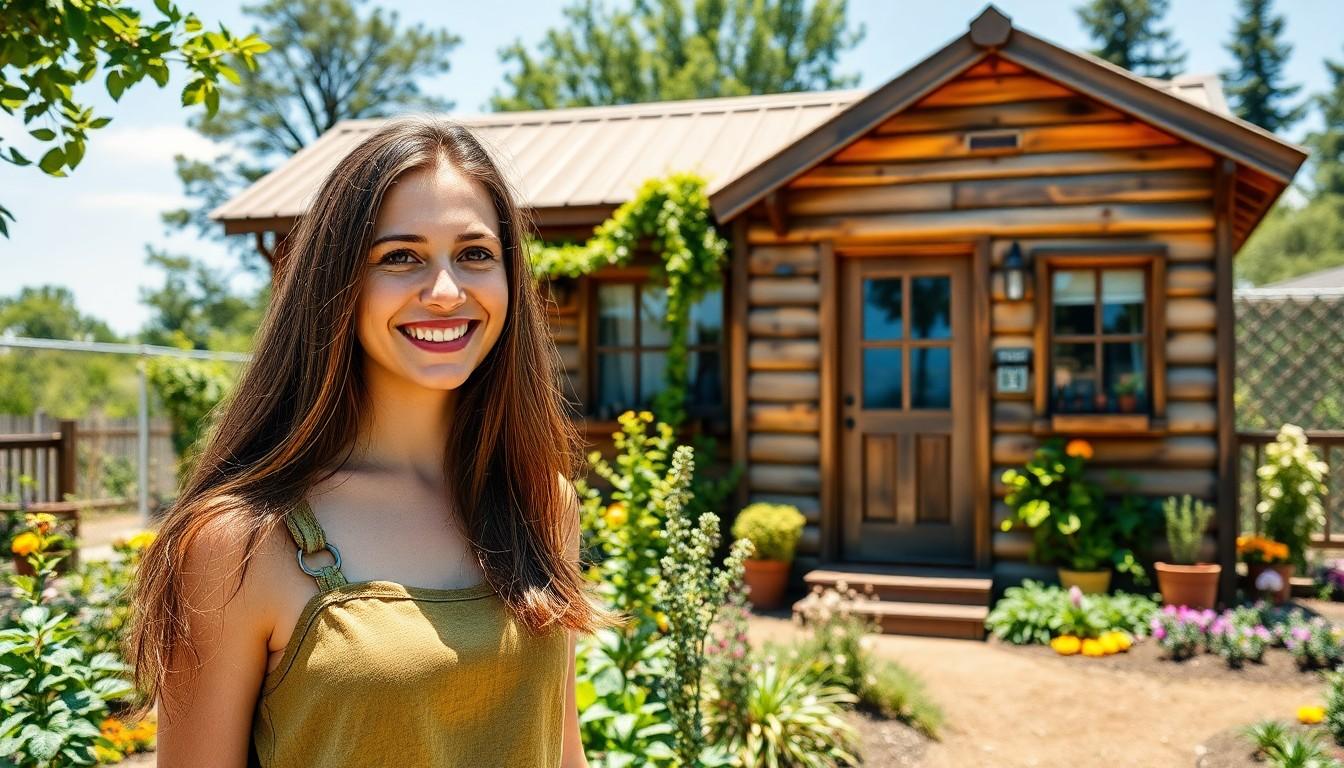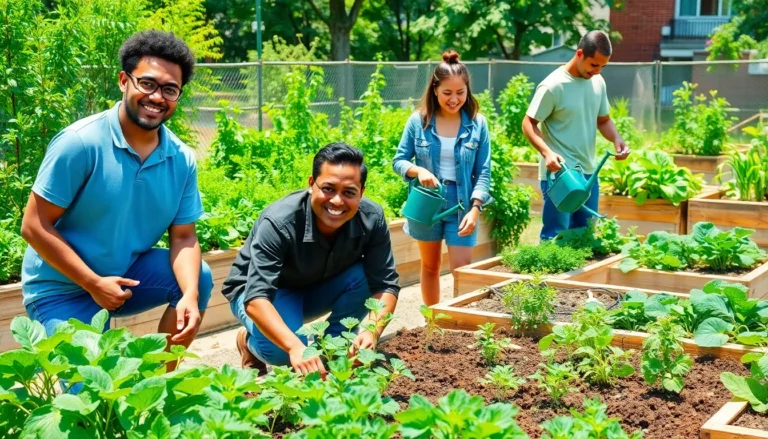In a world where bigger often seems better, tiny houses are flipping the script and proving that good things really do come in small packages. Imagine a cozy space that’s not only charming but also eco-friendly, allowing you to live your best life while saving the planet. Tiny house sustainable living isn’t just a trend; it’s a movement that’s reshaping how people think about homeownership, minimalism, and environmental responsibility.
Tiny House Sustainable Living
Tiny house sustainable living offers numerous advantages that enhance overall quality of life while promoting environmental consciousness.
Environmental Impact
Tiny homes contribute significantly to reducing carbon footprints. Lower energy consumption results from smaller living spaces requiring less power for heating or cooling. Natural materials often used in construction minimize the release of harmful toxins. Many tiny homes utilize renewable energy sources, such as solar panels, ensuring a sustainable energy supply. Additionally, these homes often incorporate innovative designs that maximize resource efficiency. Sustainable living practices become easier with reduced waste and lower resource demands.
Cost Savings
Tiny houses provide financial relief through reduced costs associated with home ownership. Smaller mortgages keep monthly payments low, allowing individuals to invest in experiences rather than material possessions. Property taxes frequently decrease due to the lower market value of tiny homes. Maintenance expenses decline as less space results in fewer repairs needed over time. Utility bills shrink, promoting further financial sustainability. Choosing minimalistic lifestyles enables individuals to allocate funds to savings or travel, thereby enhancing overall quality of life.
Designing a Tiny Home

Designing a tiny home requires careful consideration of both space and materials. Each element must contribute to sustainability and efficiency.
Efficient Use of Space
Maximizing space in tiny houses enhances livability and functionality. Multi-purpose furniture creates flexibility, allowing rooms to serve various purposes. For instance, a convertible sofa bed offers both seating and sleeping options. Smart storage solutions, such as built-in shelves and under-bed compartments, utilize every inch effectively. Open floor plans promote a sense of spaciousness and allow natural light to flow freely. Prioritizing vertical space with wall-mounted storage or loft areas increases usable space without increasing the home’s footprint. Creative use of layouts can accommodate different lifestyles, ensuring comfort and convenience. Emphasizing modular designs encourages adaptability and makes tiny homes more versatile over time.
Sustainable Materials
Utilizing sustainable materials plays a vital role in tiny home construction. Reclaimed wood, for example, reduces waste and provides a unique aesthetic. Bamboo stands out for its rapid growth and strength, making it an eco-friendly choice for flooring or cabinetry. Moreover, recycled metals can enhance structural integrity while minimizing environmental impact. Insulated panels made from renewable resources maximize energy efficiency and maintain comfortable temperatures. Non-toxic paints and finishes improve indoor air quality, contributing to a healthier living environment. Sourcing local materials supports regional economies and reduces transportation emissions. Choosing sustainable materials not only aligns with environmental goals but also adds character and durability to tiny homes.
Tiny House Community and Lifestyle
Tiny house living fosters a unique community spirit centered around sustainable lifestyles. Residents often collaborate, sharing resources and embracing a minimalist mindset.
Shared Resources
Shared resources enhance sustainability in tiny house communities. Many neighborhoods establish communal gardens that encourage food production while reducing grocery bills. Tool libraries allow residents to lend and borrow equipment, minimizing individual expenses and promoting resource efficiency. Some communities also implement shared energy systems, such as solar panels, that lower utility costs for all. Such resource-sharing initiatives not only aid environmental stewardship but also build a sense of camaraderie among residents.
Social Connections
Social connections thrive in tiny house communities. Residents frequently organize social events like potlucks and workshops, allowing neighbors to bond over shared interests and challenges. These gatherings strengthen relationships and foster a supportive environment. Moreover, many tiny house homeowners find motivation through shared experiences, such as transitioning to tiny living or exploring eco-friendly practices. Community support leads to improved well-being and encourages members to embrace their sustainable living choices collectively. Engaging in joint activities enhances the lifestyle and reinforces the sense of belonging.
Challenges of Tiny House Living
Tiny house living presents unique challenges that individuals must navigate. From zoning laws to lifestyle adjustments, each aspect shapes the experience.
Zoning Laws and Regulations
Zoning laws significantly impact tiny house placement. Many areas restrict home sizes or enforce specific building codes. Residents often face difficulties in finding compliant land for their tiny houses. Regulations can vary widely, complicating the process of securing a legal location. Some communities may not permit tiny homes at all, forcing individuals to explore alternative options. Connecting with local tiny house advocacy groups helps keep residents informed about changing regulations. Knowledge of local laws is crucial for successful tiny house living.
Lifestyle Adjustments
Adapting to tiny house living requires major lifestyle changes. Downsizing possessions is often the first step. Each item must be carefully considered for its necessity and function. Minimalism becomes essential while prioritizing only the most important belongings. Social habits may also change; hosting large gatherings can be more challenging in limited space, making portable toilets for rent a practical solution for accommodating guests. Incorporating multi-purpose furniture facilitates functionality and maximizes available space. Embracing a simpler lifestyle ultimately fosters a deep appreciation for both space and resources. Transitioning to this new way of living brings rewards through increased freedom and less financial burden.
sustainable living practices
Tiny house sustainable living offers a transformative approach to homeownership and environmental responsibility. By embracing minimalism and efficient design, individuals can reduce their carbon footprints while enjoying financial freedom. The sense of community that often develops among tiny house residents fosters collaboration and resource sharing, enhancing the overall lifestyle.
Despite the challenges posed by zoning laws and lifestyle adjustments, the rewards of tiny living are significant. It encourages a deeper appreciation for space and resources, leading to a more fulfilling life. As this movement continues to grow, it inspires a shift towards more sustainable living practices that benefit both individuals and the planet.




